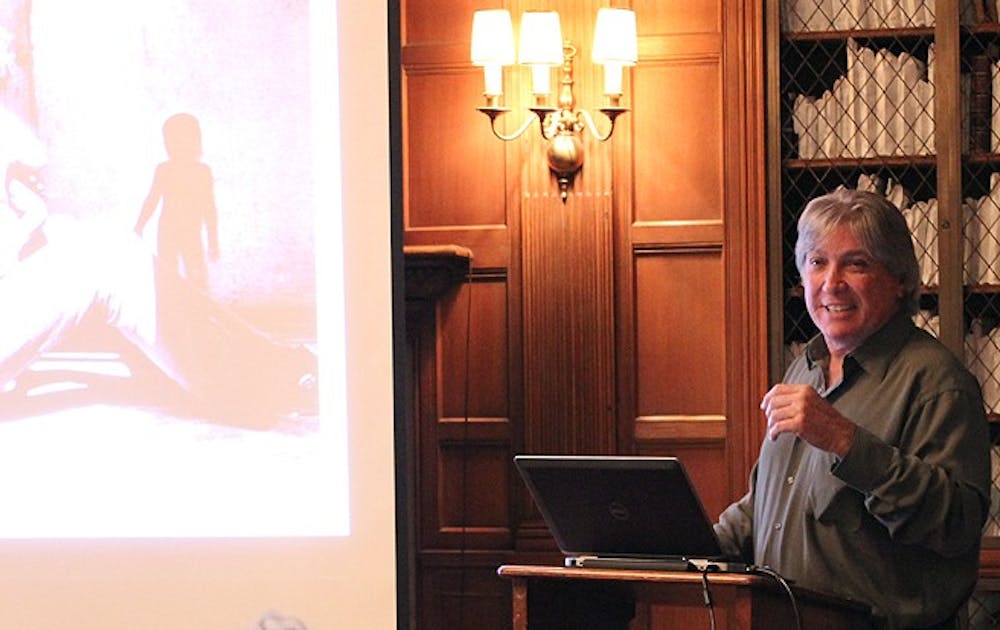The Florida Highwaymen Artists broke through racial boundaries and pursued a new artistic style, said Gary Monroe, photographer and Highwaymen historian.
Monroe presented the varied works of the Highwaymen, a group of black artists who lived in Florida in the 1960s. He also gave an overview of his personal photography and the overall importance of art. The event, “The Highwaymen: Florida’s African-American Landscape Painters,” was sponsored by Duke’s archive of documentary arts.
“There is something about their painting and their back stories that really struck a cord with people,” Monroe said. “I fell in love with their stories. I fell in love with their paintings.”
Monroe began researching the stories of the Highwaymen when he took a break from his job as a photographer.
Because he noticed that almost all of his role models and mentors began to “burn out” around middle age, Monroe decided to examine to work of other local artists. The 26 highwaymen began their work in 1960, Monroe noted. Many consider their leader to be Alfred Hair.
“Alfred Hair never aspired to be a great artist,” Monroe said. “ In 1960, he aspired to be a millionaire by his 35th birthday.”
He added that this was not a realistic goal at a time when most young black men in the South felt grateful to have a job “picking oranges on a farm and making next to nothing.”
Artist A.E. Backus trained Hair in the art of fine painting, and Hair aspired to attain the success of Backus. But due to racial prejudice and bigotry in Florida at that time, Hair knew that he would never accomplish as much as a white man could.
But Hair did not let this deter him from profiting from his artistic abilities.
“He figured he would paint 10 paintings in the same amount of time that it took Backus to paint one, and he would charge one-tenth of the price,” Monroe described.
It was with this mindset—to make as much money in as short of an amount of time as possible—that Hair began to develop a new style of art called “fast painting,” Monroe said.
Although this new style “corrupted” the long-held ideas of developed painters, he noted that it gave the purchaser a chance to “add their own narratives to their paintings.”
The exact lineage of many Highwaymen paintings have been lost to time or unsigned work.
“They could have cared less about who painted a painting, what they cared about was making $25,” Monroe noted.
The detail and likeness of an image was not as important to the Highwaymen as the emotions that it conveyed.
“We didn’t paint for perfection, we painted for color,” Hezekiah Baker, a member of the Highwaymen artists, famously said.
Monroe noted that in his time studying the Highwaymen, he began to understand the discrimination that faced the rising group of black artists. Many people were apprehensive about his research.
“[I was] a 50-year-old pasty skinned white guy getting out of a nice car with a clipboard,” he said. “Needless to say I was not the most popular in that area.”
In his many interviews with those who remembered the Highwaymen as they first began to sell their works, Monroe uncovered a web of racial tension that led to untrue rumors and discrimination.
In one story, a man described the Highwaymen style as “assembly line art.” He went on to accuse the group of stealing all of their supplies, though no reports of this were ever found to be true.
Naomi Nelson, director of the Rubenstein Rare Book and Manuscript Library, said that it is important for students to see the connections between art and exceeding societal expectations.
She added that in some cases, the time and place of an accomplishment can be more important than the magnitude of the accomplishment itself.
Nelson encouraged students to explore other works of art that can inspire students to push themselves further toward reaching the American dream.
Kirston Johnson, moving image archivist of the archive of documentary arts, coordinated the event. She said it was an important way to bring art to Duke students.
Get The Chronicle straight to your inbox
Signup for our weekly newsletter. Cancel at any time.

